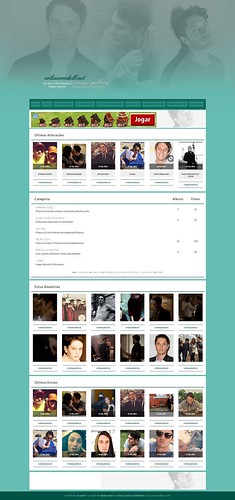
Source: Flickr
The Internet is home to various artists, web artists, and designers both professional and amateur. It can afford to provide individuals with opportunities to freely explore their artistic capabilities and publish content to a borderless audience.
However, unluckily, alongside this freedom of expression afforded to everyone is the capacity to offend sensibilities. Some website provide great utility and aesthetic pleasure—others are bound to get annoying.
There are ways and means in order to avoid getting annoying, and its best to start by knowing when web design of a website does get annoying.
Using colors that just do not work
Colors in good and sensible does are a good means in order to attract attention and communicate ideas and emotions to an audience. They can help add interest to a dull site full of text, and even introduce and maintain a certain mood (as in scary websites using black as a background).
However, there is a fine line between too much and just about right. What gets annoying when it comes to colors is when readability is compromised, and combinations are too loud for comfort. When readability is compromised, it can pose great discomfort to the site’s visitors when they try to decipher the text that they want to have access to. Using too many colors and colors that do not complement each other tend to make the website look goofy and awkward, and can make the website lose whatever credibility it can possibly gain.
Too many clicks to get to the end of the road
At the end of the day, people who visit websites do so in order to access information and content in a website. Some websites tend to re-route visitors through too many clicks before they get to the content they want to get to assuming that the content is indeed somewhere in the multiple pages they are made to access. Obviously, that gets annoying. Rule of thumb says that a maximum of three clicks (but preferably less) should be enough in order for someone surfing a site to get to the information they want to get to.
Excessive graphics that take too long to load
Graphics and pictures, when relevant and are the primary content meant for the website, are a welcome part of a website. However, when they just serve the purpose of aesthetic enhancement, graphics and pictures that take too long to load—and inevitably, slow the process of accessing primary content—become a major reason for discontent and displeasure among visitors.
It is also helpful to note that not all visitors of the website are equipped with optimal download or Internet surfing speeds; excessive graphics that are too large and thus, take too long to load are not only unwelcome but also a great inconvenience to a great number of people.
Navigation that’s over-the-top and difficult to follow
Overcomplicating the navigation of the website can greatly hamper the efficacy of the website to communicate its content, and can hurt the accessibility of many pages to its visitors. At any point during their visit to a site, it is important to assure that the visitors have some way in order to trace back their steps and return to content they previously accessed, as well as carry on with accessing other content.
For simplicity’s sake, many websites solve this problem by having a constant button present on all pages for visitors to return to their main menu page, or their cover page.
Fonts that simply do not work
Depending on the browser and fonts installed by the users on their computers, extremely decorative and highly uncommon fonts may not be displayed the way the web designer intended them to appear—and may oftentimes even compromise the readability of the text per se.
In order to avoid this from happening, many web designers opt to stay within the bounds of major font families (Helvetica, verdana, and the like). That way, they are assured that most (if not all) of their visitors will be viewing the site as designed, and thus have greater control of the way the page will be displayed in the end.
There is never a ‘perfect’ template for design as it is open to the subjectivity and artistic limitations of designers. However, understanding the behavior of site visitors can only help make shape design innovation and utility move towards greater heights.
